Melikasadat Emami
Kernel Methods and Multi-layer Perceptrons Learn Linear Models in High Dimensions
Jan 20, 2022



Abstract:Empirical observation of high dimensional phenomena, such as the double descent behaviour, has attracted a lot of interest in understanding classical techniques such as kernel methods, and their implications to explain generalization properties of neural networks. Many recent works analyze such models in a certain high-dimensional regime where the covariates are independent and the number of samples and the number of covariates grow at a fixed ratio (i.e. proportional asymptotics). In this work we show that for a large class of kernels, including the neural tangent kernel of fully connected networks, kernel methods can only perform as well as linear models in this regime. More surprisingly, when the data is generated by a kernel model where the relationship between input and the response could be very nonlinear, we show that linear models are in fact optimal, i.e. linear models achieve the minimum risk among all models, linear or nonlinear. These results suggest that more complex models for the data other than independent features are needed for high-dimensional analysis.
Augmented Contrastive Self-Supervised Learning for Audio Invariant Representations
Dec 21, 2021



Abstract:Improving generalization is a major challenge in audio classification due to labeled data scarcity. Self-supervised learning (SSL) methods tackle this by leveraging unlabeled data to learn useful features for downstream classification tasks. In this work, we propose an augmented contrastive SSL framework to learn invariant representations from unlabeled data. Our method applies various perturbations to the unlabeled input data and utilizes contrastive learning to learn representations robust to such perturbations. Experimental results on the Audioset and DESED datasets show that our framework significantly outperforms state-of-the-art SSL and supervised learning methods on sound/event classification tasks.
Implicit Bias of Linear RNNs
Jan 19, 2021



Abstract:Contemporary wisdom based on empirical studies suggests that standard recurrent neural networks (RNNs) do not perform well on tasks requiring long-term memory. However, precise reasoning for this behavior is still unknown. This paper provides a rigorous explanation of this property in the special case of linear RNNs. Although this work is limited to linear RNNs, even these systems have traditionally been difficult to analyze due to their non-linear parameterization. Using recently-developed kernel regime analysis, our main result shows that linear RNNs learned from random initializations are functionally equivalent to a certain weighted 1D-convolutional network. Importantly, the weightings in the equivalent model cause an implicit bias to elements with smaller time lags in the convolution and hence, shorter memory. The degree of this bias depends on the variance of the transition kernel matrix at initialization and is related to the classic exploding and vanishing gradients problem. The theory is validated in both synthetic and real data experiments.
Low-Rank Nonlinear Decoding of $μ$-ECoG from the Primary Auditory Cortex
May 06, 2020
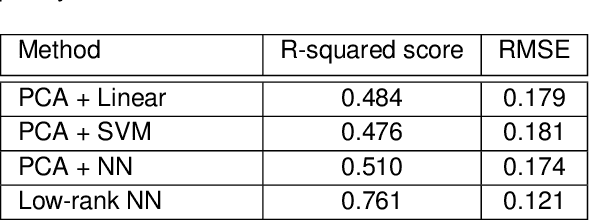

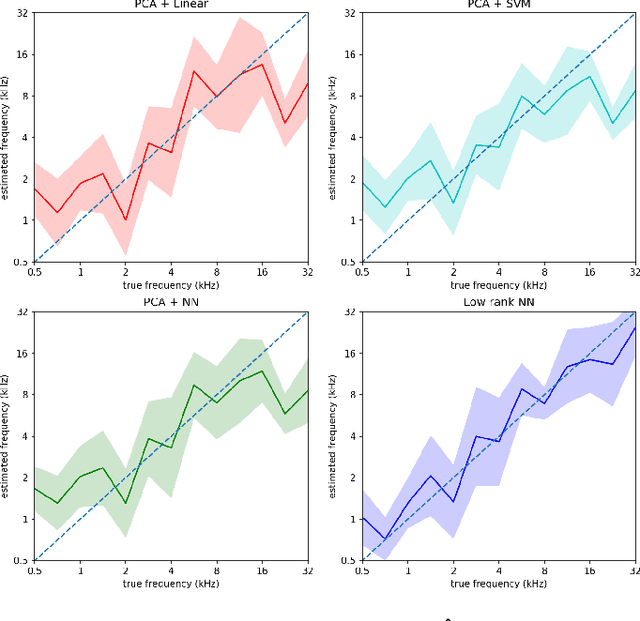
Abstract:This paper considers the problem of neural decoding from parallel neural measurements systems such as micro-electrocorticography ($\mu$-ECoG). In systems with large numbers of array elements at very high sampling rates, the dimension of the raw measurement data may be large. Learning neural decoders for this high-dimensional data can be challenging, particularly when the number of training samples is limited. To address this challenge, this work presents a novel neural network decoder with a low-rank structure in the first hidden layer. The low-rank constraints dramatically reduce the number of parameters in the decoder while still enabling a rich class of nonlinear decoder maps. The low-rank decoder is illustrated on $\mu$-ECoG data from the primary auditory cortex (A1) of awake rats. This decoding problem is particularly challenging due to the complexity of neural responses in the auditory cortex and the presence of confounding signals in awake animals. It is shown that the proposed low-rank decoder significantly outperforms models using standard dimensionality reduction techniques such as principal component analysis (PCA).
Generalization Error of Generalized Linear Models in High Dimensions
May 01, 2020
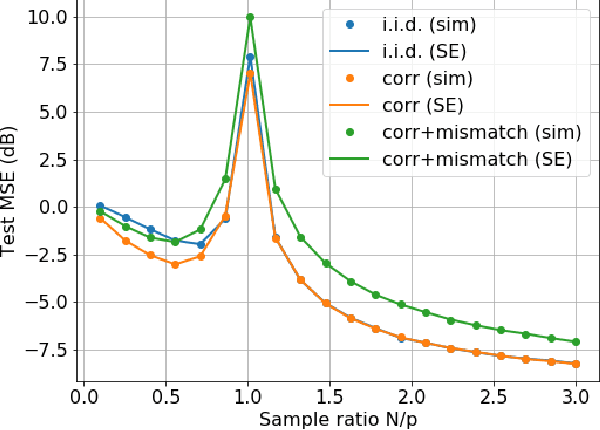
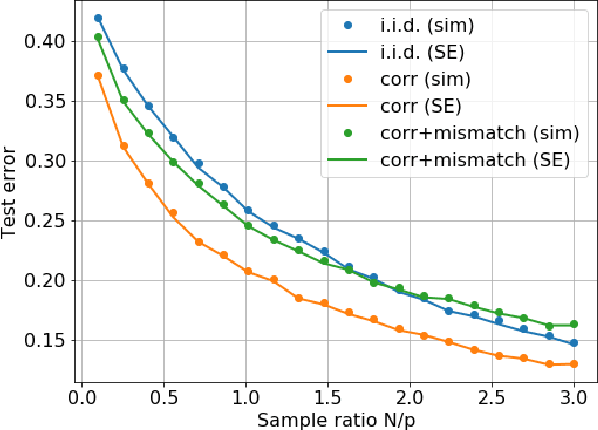
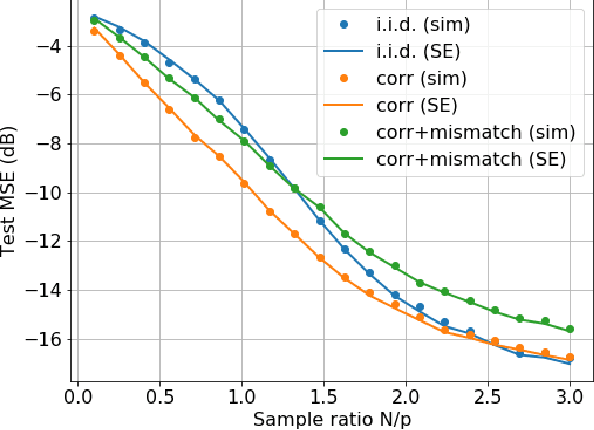
Abstract:At the heart of machine learning lies the question of generalizability of learned rules over previously unseen data. While over-parameterized models based on neural networks are now ubiquitous in machine learning applications, our understanding of their generalization capabilities is incomplete. This task is made harder by the non-convexity of the underlying learning problems. We provide a general framework to characterize the asymptotic generalization error for single-layer neural networks (i.e., generalized linear models) with arbitrary non-linearities, making it applicable to regression as well as classification problems. This framework enables analyzing the effect of (i) over-parameterization and non-linearity during modeling; and (ii) choices of loss function, initialization, and regularizer during learning. Our model also captures mismatch between training and test distributions. As examples, we analyze a few special cases, namely linear regression and logistic regression. We are also able to rigorously and analytically explain the \emph{double descent} phenomenon in generalized linear models.
 Add to Chrome
Add to Chrome Add to Firefox
Add to Firefox Add to Edge
Add to Edge